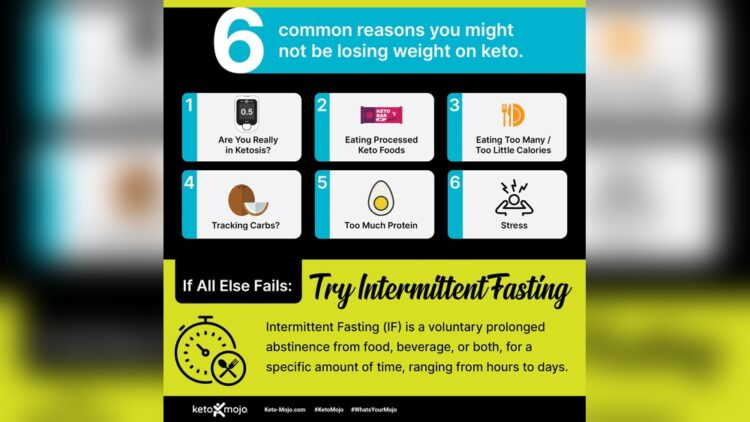Experiencing inch loss but not weight loss is common due to muscle gain offsetting fat loss. Fat takes up more space than muscle, making you slimmer without changing the scale.
Losing inches but not weight is a sign that your body composition is changing, indicating that you could be gaining muscle while losing fat. This positive transformation often happens when individuals engage in strength training or high-intensity workouts that build muscle mass.
Focusing solely on the scale can be misleading since it does not differentiate between the weight of muscle, fat, water, or bone in your body. A more accurate picture of health and fitness improvements comes from measuring changes in body circumference, clothing fit, and overall appearance. By prioritizing inch loss over weight loss, you align with fitness goals geared towards a leaner, stronger body rather than just a lower number on the scale. Remember, a well-rounded approach to fitness considers both physical changes and numerical data to track progress effectively.
Introduction To Inch Loss Versus Weight Loss
Many people focus on weight loss but miss the importance of inch loss. Weight alone can be misleading. Muscles weigh more than fat. So, you might be getting fitter without seeing a big change on the scale. A better fitness marker is how your clothes fit – that’s inch loss.
Consider body composition’s role in health. Body composition refers to fat, muscle, and bone in your body. Improving body composition means losing fat and gaining muscle. This change can make you look leaner and more toned, even if your weight stays the same.
Ignore the scale sometimes. It doesn’t show the full health picture. Instead, use a tape measure or look at how your clothing fits. These can show the real progress of your fitness journey. As more people understand this, inch loss is becoming a popular goal.
The Science Behind Inch Loss
Fat and muscle differ in density and volume significantly. This fact explains why inches can be lost without a drop in weight. One pound of muscle occupies less space compared to one pound of fat. Hence, a person’s body can appear slimmer and more toned with muscle gain and fat loss, even when the scale shows no change.
The body burns fat and builds muscle differently. Regular exercise and proper nutrition lead to muscle growth. On the flip side, the body burns fat when it needs more calories than consumed. Muscle-building activities change your body’s shape and size, causing inch loss not reflected on the scale.
Metabolism plays a crucial role in inch loss. A faster metabolism can increase calorie burning, resulting in more fat loss even without weight loss. Genetics, diet, and physical activity levels all influence metabolism rates.
Water retention affects weight and measurements. The body can hold onto water for various reasons, like diet and hormonal changes. This can lead to fluctuations in weight and bloating, distorting inch loss measurements. Monitoring changes in body measurements can provide a more accurate picture of progress than weight alone.
Assessing Your Progress: Tracking Inch Loss
Measuring body circumference requires certain tools and techniques. One popular tool is a soft measuring tape, commonly used by tailors. It’s flexible and wraps around body parts easily, allowing you to measure your size. A second option could be smart scales that not only indicate weight but also provide estimates of body composition, including muscle and fat percentages. It’s key to ensure measurements are consistent. Choose the same time and day each week to track progress. For best results, wear similar clothing and stand in the same posture during each measure.
Setting realistic goals is crucial. Understand that progress can be slow. Celebrate small successes in inch loss as they represent real changes in your body. To accurately interpret results, compare measurements over time rather than in isolation. This might mean weekly or monthly check-ins. Identifying patterns in your measurements can prompt changes to fitness plans. If inches aren’t dropping, it’s a sign to alter your exercise or diet approach.
The Health Benefits Of Prioritizing Inch Loss
Focusing on inch loss can lead to better heart health. A trimmer waistline often means less fat around the heart. Your heart works better with fewer fat. Less fat means your blood flows easier. This can lower the chance of heart disease. Strong muscles help the body last longer during activities. They also burn more calories at rest. This aids in weight control.
Improved insulin sensitivity makes it easier for your body to handle sugar. This can lower your risk of diabetes. Less body fat means a lower chance of obesity-linked illnesses. These illnesses include type 2 diabetes and some cancers. Shedding inches often means losing harmful fat. This fat sits deep inside your belly. This type of fat loss is beneficial for long-term health.
Practical Strategies For Achieving Inch Loss
Effective exercise programs are essential for inch loss. Tailor your routine to include a mix of aerobic, strength, and flexibility workouts. Aim for consistency rather than intensity, making sure to exercise at least 150 minutes per week.
Adopt nutritional guidelines focused on whole foods. Embrace a diet rich in vegetables, fruits, lean proteins, and whole grains. Portion control and a balance of macro and micro-nutrients are key. Limit processed foods and sugar to aid inch loss.
Lifestyle changes directly support inch loss goals. Prioritizing active habits, like walking instead of driving, adds up. Stress management through techniques like yoga or meditation and ensuring adequate sleep each night is crucial. Both are proven to help in managing body measurements.

Credit: www.facebook.com
Weight Loss Versus Inch Loss: The Psychological Impact
Focusing solely on weight loss can fuel a negative body image. An obsession with the scale reflects how daily fluctuations upset many. Body composition changes, like muscle gain, may not show as weight loss, yet improve appearance and health. Seeing numbers drop becomes synonymous with success, which is misleading.
Shifting the focus to inch loss presents a positive fitness approach. It contemplates overall well-being, not just the weight factor. Muscles weigh more than fat, so even if the scale stalls, clothes might fit better. This approach advocates for a healthier lifestyle, not just a fleeting change.
Social support and community are vital in fitness journeys. Encouragement from peers helps maintain motivation. Fitness communities often celebrate non-scale victories, such as increased strength or improved endurance. These milestones are crucial for long-term sustainability and pleasure.
Inch Loss Success Stories
Countless success stories highlight the importance of focusing on inch loss over weight loss. One individual achieved a significant transformation through a tailored fitness regimen, showcasing a toned body despite the scales barely shifting. This underscores that muscle density and fat reduction are key indicators of health, not just the numbers on a weighing scale.
Personal journey reflections reveal that consistent physical activity and mindful eating are potent strategies for reshaping the body. Patience emerges as a crucial virtue, with visible changes in body composition often taking precedence over rapid weight drops.
| Age Range | Gender | Lifestyle | Impact on Inch Loss |
|---|---|---|---|
| 20-30 | Female | Active | High muscle gain, prominent inch loss |
| 31-40 | Male | Sedentary | Moderate inch loss, slower metabolism |
| 41+ | Female | Moderately active | Consistent inch loss, improved joint health |
Stories across various ages, genders, and lifestyles demonstrate that comprehensive approaches to fitness result in meaningful inch loss. Young adults exhibit quicker muscle gains, while older individuals benefit from enhanced joint health through gradual inch loss.

Credit: www.nbcnews.com
Conclusion And Future Perspectives
The journey to fitness is about more than numbers on a scale. Inch loss signifies a more sculpted physique, an indicator of muscle gain and fat loss. Focusing on inches, rather than weight, aligns with whole-body health goals — striving for strength, endurance, and a balanced body composition.
This shift is essential for a holistic view of health. It integrates nutrition, movement, and mindset. Embracing body positivity, people of all shapes and sizes can celebrate fitness milestones. This move away from weight obsession encourages sustainable life changes. A cultural embrace of functional fitness values what bodies can do, not just how they look.

Credit: www.everydayhealth.com
Conclusion
Embracing inch loss is a sustainable approach to body positivity and health. It reflects true changes and muscle tone improvement, not just numbers on a scale. Celebrate your body’s strength and transformation by focusing on inches lost. Remember, wellness is about how you feel, not just what you weigh.
Choose progress over scale pressure.

:max_bytes(150000):strip_icc()/losing-inches-but-not-losing-weight-1231559_color1-5b75e98146e0fb0025807d84-298b8014b62a4cf9be809790b27c0776.jpg)







Leave a Reply